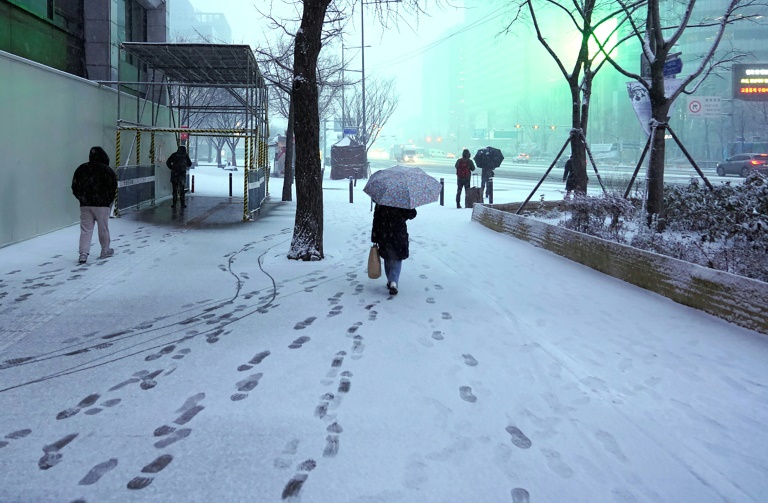This might seem like the opening scene of a horror movie but Ongeim L’Tketau – also known as Jellyfish Lake – home to approximately one million stingless Scyphozoa, is one of Palau’s most popular tourist attractions.
These are the best corals I’ve ever seen
I’m embarrassed to admit that before my visit I wasn’t entirely sure where Palau was, but after pinpointing it on the map and widening, widening – and widening – the screen, I discovered that the Republic of Palau is in the far western Pacific, east of the Philippines, north of Indonesia and west of Hawaii.
It’s part of the islands that make up Micronesia, but not one of the Federated States of Micronesia, which comprises Yap, Chuuk, Pohnpei and Kosrae.
It has a population of just 20,000, spread across 458 sq km (177 square miles) of bright blue ocean and somewhere between 340 to 500 coral and volcanic islands (depending on whether you count the very little ones), making it one of the world’s smallest nations in terms of land area.
It’s also arguably one of the world’s most beautiful; a fantasia of pom-pom-shaped islands fluffed with 178 endemic plants and dozens of rare bird species, caged in vast coral reefs set in the luminous blue Pacific.
A boat is really the only way to explore Palau. Until recently, that meant having access to a superyacht or hopping on a back-to-basics liveaboard, eating buffet dinners and sleeping in bunk beds.
Unspoilt bay in Sri Lanka aims to stay that way with tourism set to boom
Unspoilt bay in Sri Lanka aims to stay that way with tourism set to boom
Now there’s another option: the Four Seasons Explorer, a 128ft double-hull catamaran with 10 state rooms, one Explorer Suite, a fleet of aqua toys and a staff of 25 (for a maximum of 22 guests).
The yacht glides around the country, predominantly the Unesco World Heritage Rock Islands region, and guests can arrive and depart by speedboat any day of the week and stay for as many or as few days as they like, rather than having to conform to the usual seven-night itineraries that most cruises offer.
It costs US$3,000 per cabin per night, and includes gourmet meals (drinks cost extra), as well as cultural excursions to caught-in-time villages, tours with a local historian of the World War II relics that pepper Peleliu island, trips to Jellyfish Lake, stand-up paddle boarding through limestone arches, and diving.

“These are the best corals I’ve ever seen,” says Michael Cohen, a lawyer and philosophy lover from San Francisco, who’s celebrating his wife’s 60th birthday.
“We used to go diving in the Caribbean, but it’s not in as good shape as it used to be. You have to travel further and further out now to find really healthy marine life – in the past few years we’ve been to Indonesia, the Seychelles, the Maldives and now Palau.”
Palau is blessed with underwater gardens of giant coral roses with blush-pink petals unfolding down to the seabed; vast forests of lavender staghorns with electric blue tips; fields of quivering purple things that look like egg waffles; brain corals as big as two-bedroom bungalows. It’s also, as far as I can tell, free from plastic litter.

The pristine surroundings aren’t down to chance. Since gaining independence from the United States in 1994, the people of Palau have made a concerted effort to protect the country’s culture and environment, even encoding the “conservation of a beautiful, healthful and resourceful natural environment” into the constitution.
The country is one of the world’s largest marine reserves, with 80 per cent of its waters protected from all types of fishing and mining, as well as incorporating the world’s first shark sanctuary. It is against the law to take or kill any birds, eggs, marine life, shells or plants.
When I arrived in the country, greeted by possibly the world’s friendliest immigration officer, I was asked to sign the Palau Pledge – which takes up an entire page of my passport – promising to respect the environment for the children of Palau and future generations.
In a world buckling under overtourism, this feels like a genuine revelation.
“Our former president wanted Palau to focus on high-value visitors like the Four Seasons guests as they are more interested in our culture and more respectful of our culture,” says Olympia Mori.
Mori is the director of the Belau National Museum in Koror, and an ourrot, a female village elder.
In this matrilineal society, women are the decision-makers, with the ability to appoint – and remove – the village chiefs. They often go on to hold seats in Palau’s parliament.
Women also handle all of the money: traditionally, clay and glass beads, as well as more valuable hawksbill turtle shell trays. Now, it’s the US dollar.

“I think tourism is good for us. At the moment, our young people fare better outside Palau than here,” says Mori, referring to the outflow of young people to the US (of which Palau remains a trust territory) for military service or in search of jobs.
“We need the tourism industry to offer them the right opportunities, the right training that respects our culture, and the right compensation.”
A member of the dive team, Hongkonger Leung Tsz-wai, also known as Leo, leads me through the spooky smacks of jellyfish, teaches me to dive while snorkelling and cheerfully points out the marine life – clown fish, napoleon wrasse, a delightful nudibranch and a couple of octopus engaged in an inky battle.

What we don’t see is any coral bleaching or signs of serious environmental damage.
That’s not to say Palau isn’t at the mercy of climate breakdown from rising sea levels, ocean acidification and more extreme weather events. But following traditional basic principles, known as the kelulau, which include respecting and honouring the environment, compassion and cooperation, unity and good conduct, at least Palauans can say that they’re doing almost everything they can to mitigate that risk.
As fascinating as it is beautiful, the rest of the world could learn a lot from this little island nation.
Lee Cobaj was a non-paying guest of the Four Seasons Explorer.







